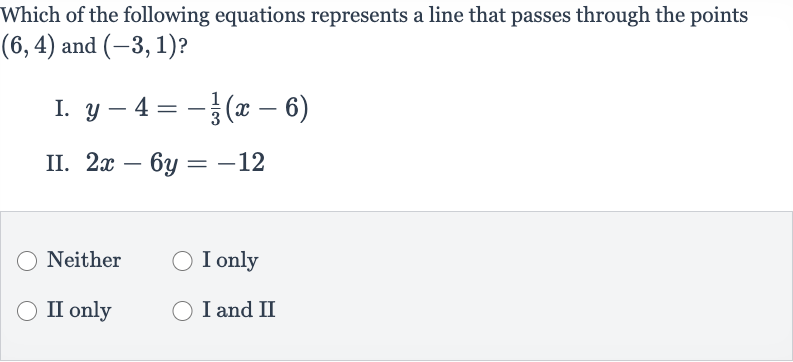Full solution
Q. Which of the following equations represents a line that passes through the points and ?I. II. NeitherI onlyII onlyI and II
- Calculate slope: Calculate the slope of the line passing through the points and . The slope is given by the formula . Using the points and , we get . . .
- Point-slope form: Use the point-slope form of the equation of a line to write the equation for the line with the slope from Step that passes through one of the given points, say .The point-slope form is .Using the slope and point , we get .
- Check equation I: Check if equation I, , represents the line with the slope from Step .The slope of equation I is , which is the negative of the slope we calculated.Therefore, equation I does not represent the line passing through the points and .
- Convert to slope-intercept form: Convert the point-slope form of the equation from Step to the slope-intercept form to compare with equation II.
- Convert equation II: Convert equation II, , to the slope-intercept form to find its slope and y-intercept.Divide the entire equation by to solve for y.
- Compare equations: Compare the slope-intercept form of the line from Step with equation II.Both equations have the same slope, , and the same -intercept, .Therefore, equation II represents the line passing through the points and .
- Determine correct answer: Determine the correct answer based on the analysis of equations I and II.Equation I does not represent the line because its slope is the negative of the correct slope.Equation II does represent the line because it has the correct slope and -intercept.The correct answer is "II only".
More problems from Write a quadratic function from its x-intercepts and another point
QuestionGet tutor help
QuestionGet tutor help
QuestionGet tutor help
QuestionGet tutor help
QuestionGet tutor help
QuestionGet tutor help
QuestionGet tutor help
QuestionGet tutor help

